Everyday Mathematics Grade K Answer Key Unit 9 Section 9
Everyday Mathematics Grade K Home Link 9.1 Answers
Make My Design
Family Note
In school, children used shape names and detailed positional language (such as next to, above, below, left, and right) to describe and copy each other’s shape designs. Use the game below to encourage precise mathematical language.
Materials Stickers with duplicates or different materials with duplicates (such as coins, buttons, beans, pasta, or drinking straws); two pieces of paper; a large book or folder (to use as a divider)
Players 2
Object To re-create pattern-block designs using shape and positional words
Directions
- Sit next to your partner and place the divider between you.
- Use your materials to make a design on your paper. Describe the design in detail and have your partner try to make the same design using only your clues.
- Compare your designs. Do they match?
- Switch roles and try again!
Play Make My Design with someone in your family.
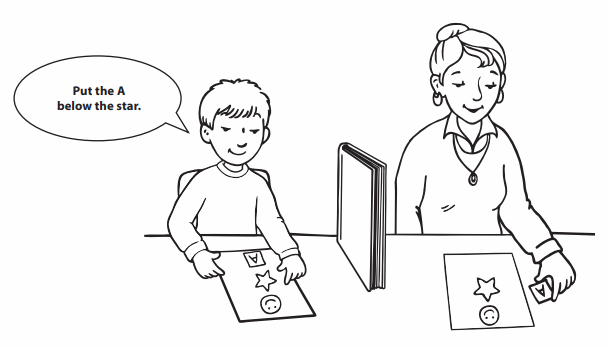
Answer:
Drawing SpongeBob SquarePants played by me and my Daddy.
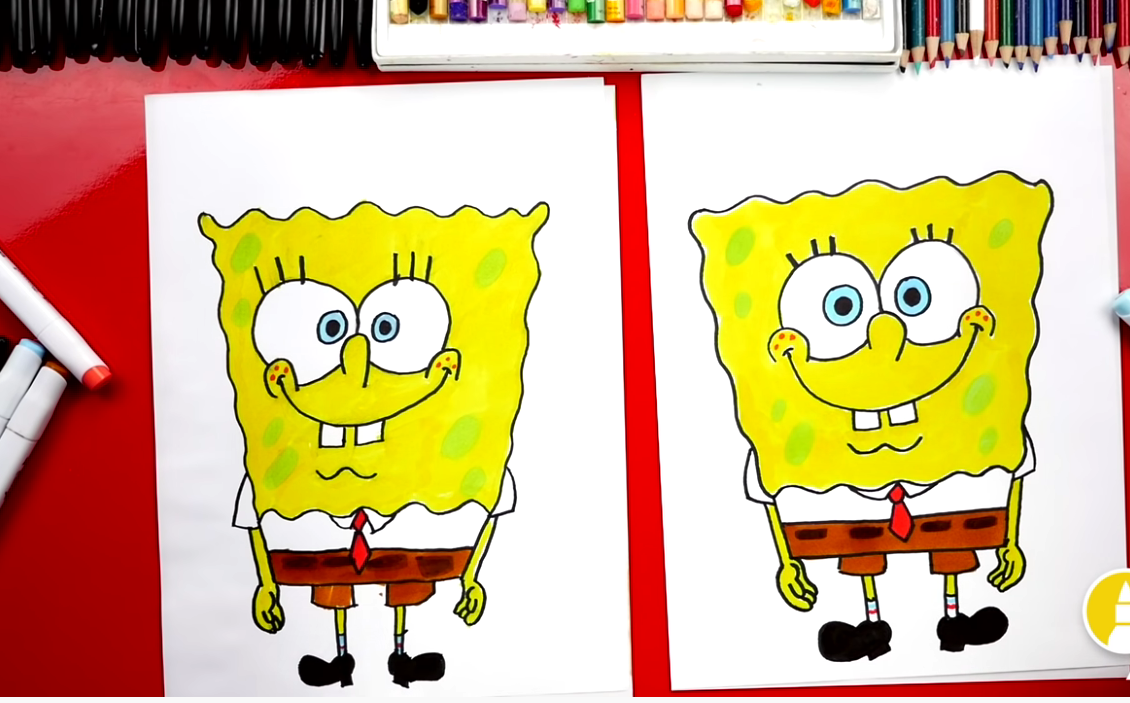
Explanation:
Play Make My Design with someone in your family.
Drawing SpongeBob SquarePants played by me and my Daddy.
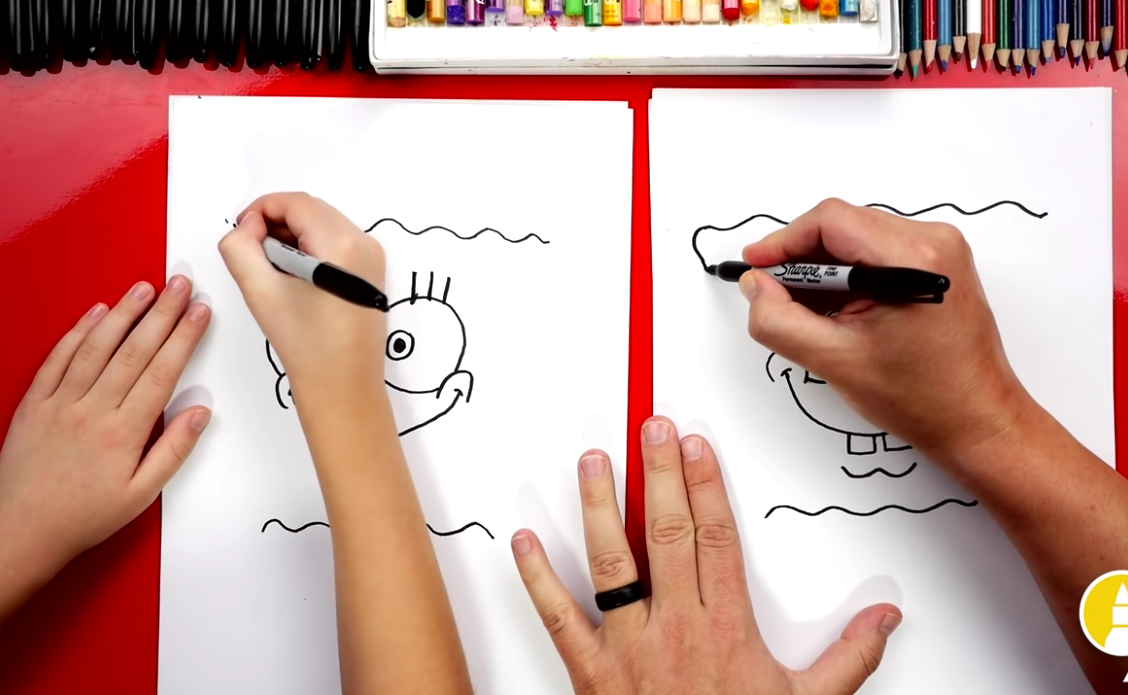
Final picture of our drawing:

The drawing are matching.
Everyday Mathematics Grade K Home Link 9.2 Answers
Addition and Subtraction
Family Note
At school, your child has been practicing adding and subtracting small numbers. Children may easily recall some facts but may also need to count on or count back, use their fingers, or count objects to solve other problems. With repeated practice and encouragement, your child will develop more efficient strategies over time. Use the following activities to help your child build fluency, the ability to add or subtract quickly and accurately, for sums and differences within 5.
Ask a family member to do these fun addition and subtraction activities with you:
• Call out problems for you to answer with movement. For example: Answer 4 – 1 with 3 claps. Say the equation. Then say the answer and count the motions: 4 – 1 = 3.
1 [clap], 2 [clap], 3 [clap]!
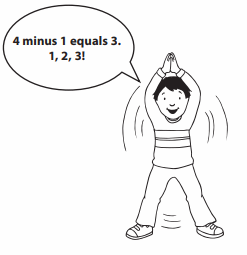
• Tell number stories for you to solve. For example: We had 1 apple and got 3 more. How many apples do we have now?
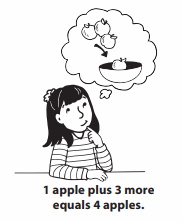
• Take turns rolling two dice and adding or subtracting the number of dots.

Answer:
You have 5 muffins. In that we took 2 muffins. How many are there with u , make a round for your answer and tell.
5 – 2 = 3 or Three.
Explanation:
Total muffins I have = 5 or Five.
Number of muffins They took = 2 or two.
Remaining muffins with me = Total muffins I have – Number of muffins they took
= 5 – 2
= 3 or Three.
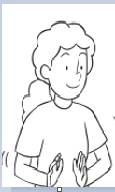
Everyday Mathematics Grade K Home Link 9.5 Answers
Measuring Objects
Family Note
In school, your child has been learning to describe and compare the height, width, area, capacity, and weight of objects. Support your child by exploring these attributes of objects in your home. Gather containers of various sizes, such as cups, baking pans, baskets, bags, and shoe boxes. Help your child find and use same-size units (such as footsteps, stick-on notes, or paper clips) to measure height and width. Use blocks, beans, snacks, or packing peanuts to fill containers and compare capacities. If you have a scale, your child can weigh the container empty and full.
Choose a container and decide the units you will use to measure.
Measure the height.
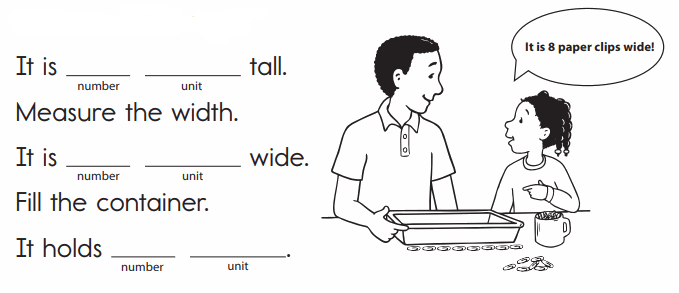
If you have a scale, weigh your container when it is empty and when it is full. Record each weight and compare them. Why are the weights different?
You might want to try this again with a new container.
Answer:
Height of my Dad’ cup = 4 paperclips.
Width of my Dad’ cup = 2 paperclips.
Weight of my Dad’s empty cup = 0.98 grams.
Weight of my Dad’s filled cup = 5.65 grams
Difference:
= 5.65 grams – 0.98 grams
= 4.67 grams.
Weighs are different because the cup is filled peanuts is making the difference.
Explanation:
Height of my Dad’ cup = 4 paperclips.
Width of my Dad’ cup = 2 paperclips.
Weight of my Dad’s empty cup = 0.98 grams.
When filled the cup with peanuts ,
Weight of my Dad’s filled cup = 5.65 grams
Difference:
Weight of my Dad’s filled cup – Weight of my Dad’s empty cup
= 5.65 grams – 0.98 grams
= 4.67 grams.
Everyday Mathematics Grade K Home Link 9.9 Answers
Timing Yourself
Family Note
Your child has been learning to use timers to measure time in seconds. In this activity, your child will explore what he or she can do in 60 seconds (one minute).
Find a timer (a kitchen timer or the timer on a phone) and set it for one minute.
Choose an exercise (for example, sit-ups, leg raises, or jumping jacks). Count how many you can do in one minute. Try a few more kinds of exercises for one minute each. Which could you do the most times?
Think of other activities and test whether you can do them in one minute. Can you write your name five times, empty your backpack, or make a sandwich in 60 seconds?
Below, draw something you can do in 60 seconds.
Answer:
Making my bed in 60 Seconds.
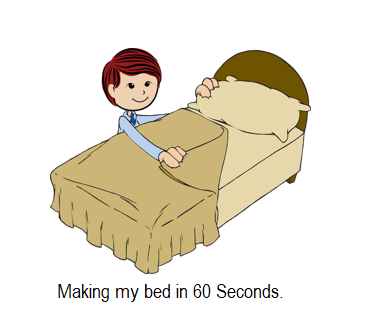
Explanation:
Activity which I can do it 60 seconds, is listed below:

I have tried to complete this activity within time, yet completed by 75 Seconds.
Everyday Mathematics Grade K Home Link 9.12 Answers
Planning for Our Math Celebration
Family Note
We are so excited to use the math skills we learned in school this year to plan for our end-of-year Math Celebration! Please help your child with the task listed below.
Your job for the celebration is:
Answer:
My job for the celebration is: PAPER ACTIVITIES.
Explanation:
My job for the celebration is: PAPER ACTIVITIES.
A collection of activities that involve coloring, building things out of paper, producing complex shapes by folding and cutting, and solving math puzzles.
In this document, you will find several activities making use of paper:
1. Coloring Maps.
2. Fish Octahedron.
3. Tessellations.
4. Bridges of Konigsberg.
5. Fold-and-Cut.
Participants:
Ages 10 – 12 and up (depending on the activity).
Preparations:
Printed templates (one for each participant), coloring pencils.
Some activities require scissors and glue or tape.
Family Note
We are so excited to use the math skills we learned in school this year to plan for our end-of-year Math Celebration! Please help your child with the task listed below.
Your job for the celebration is:
Answer:
My job for the celebration is: Mathematics Scavenger Hunt.
Explanation:
My job for the celebration is: Mathematics Scavenger Hunt.
In this game small teams search for mathematically interesting items from a list and take pictures of them. This activity is about discovery, creative thought, and looking at things from a different perspective, which are fundamental in mathematics.
The scavenger hunt should ideally be played by teams of 3-5 kids ages 12 and up, or families (where adults can offer help interpreting some indications to younger members).